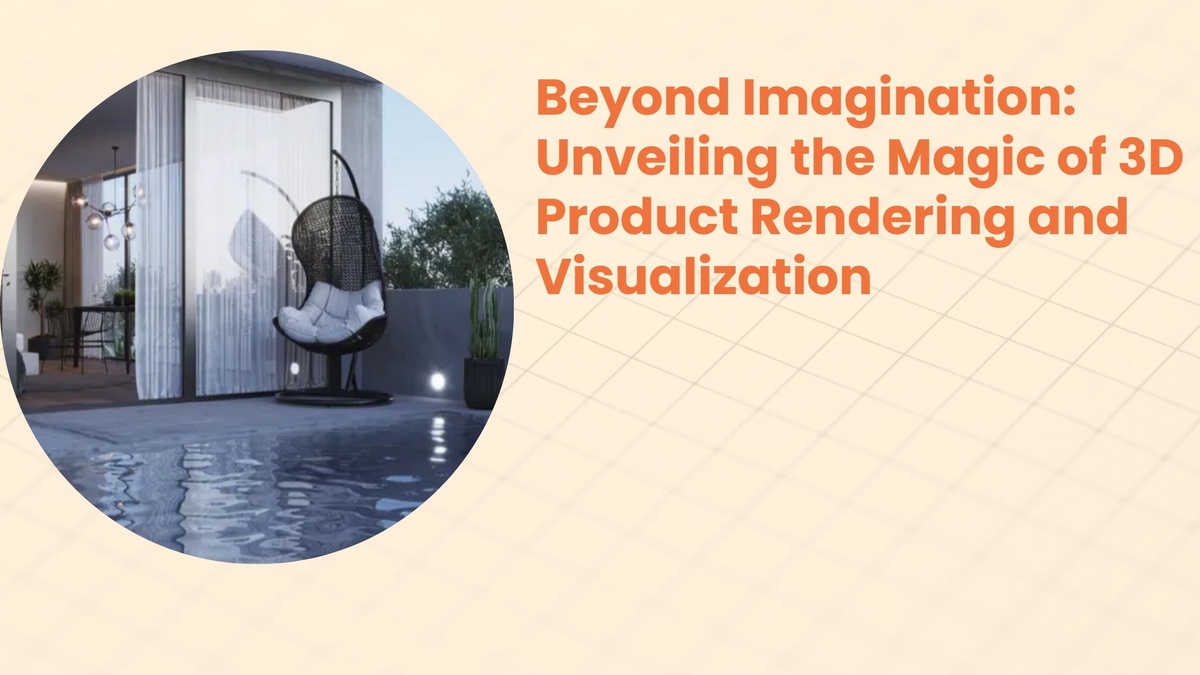Introduction:
In the dynamic world of product presentation, the marriage of technology and creativity has given rise to a transformative tool—3D product rendering and visualization. This powerful duo allows businesses to transcend traditional boundaries, offering a captivating and realistic representation of products. In this comprehensive overview, we delve into the realm of 3D product rendering, exploring its benefits, applications, and how it revolutionizes the way products are showcased.
Decoding 3D Product Rendering:
At its core, 3D product rendering involves the creation of lifelike, three-dimensional images of products using specialized computer software. This digital technique brings products to life in a way that traditional photography cannot, providing unparalleled flexibility and creative control.
Benefits of 3D Product Rendering:
Realism and Detail: 3D rendering allows for the creation of highly realistic images with intricate details, enabling customers to visualize products with unparalleled accuracy.
Flexibility and Customization: Modify product colors, materials, and configurations effortlessly. Adapt the visuals to align with branding, market trends, or specific customer preferences.
Cost and Time Efficiency: Compared to traditional photography, 3D product rendering reduces costs associated with set design, photography equipment, and reshoots. It also accelerates the production timeline.
Consistency Across Platforms: Ensure a consistent and cohesive visual representation of products across various marketing channels, from e-commerce websites to social media and print materials.
Applications of 3D Product Rendering:
- E-Commerce and Retail:
Enhance online shopping experiences by showcasing products from every angle. Allow customers to virtually examine details, colors, and textures before making a purchase decision.
- Product Prototyping:
Use 3D rendering for virtual prototyping, enabling designers and manufacturers to visualize and refine product designs before physical prototypes are created.
- Marketing and Advertising:
Elevate marketing campaigns with stunning visuals that tell a compelling story. 3D rendering is particularly effective for highlighting features, demonstrating functionality, and creating memorable advertisements.
- Catalogs and Brochures:
Produce visually striking catalogs and brochures that showcase a diverse product range. Tailor visuals to match specific marketing themes or seasonal campaigns.
- Architectural Visualization:
Beyond products, 3D rendering extends to architectural visualization. Architects and designers use it to create lifelike representations of buildings, interiors, and landscapes.
The 3D Rendering Process:
- Modeling:
Develop a 3D model of the product using specialized software. This step involves creating a digital representation with accurate dimensions and details.
- Texturing and Materials:
Apply textures and materials to the 3D model to achieve realistic surface finishes. This includes replicating the look and feel of various materials such as metal, fabric, or wood.
- Lighting:
Set up virtual lighting to simulate natural or artificial conditions. Proper lighting enhances realism and highlights key features of the product.
- Rendering:
The rendering process involves generating the final image or animation. This step can be computationally intensive, producing high-resolution visuals with realistic lighting and shadows.
- Post-Processing:
Fine-tune the rendered images in post-processing to enhance colors, add effects, or make any necessary adjustments for the desired visual impact.
Choosing the Right 3D Rendering Services:
- Expertise and Portfolio:
Look for 3D rendering services with a portfolio that showcases a diverse range of products or projects. Ensure they have experience in your industry.
- Technology and Software:
Opt for service providers that utilize cutting-edge 3D rendering technology and software to ensure high-quality and realistic visuals.
- Collaboration and Communication:
Choose a team that values collaboration and effective communication. The ability to understand and interpret your vision is crucial for a successful rendering.
- Turnaround Time:
Assess the turnaround time offered by the 3D rendering service. A balance between speed and quality is essential, especially for time-sensitive projects.
Conclusion:
In the evolving landscape of product presentation, 3D product rendering emerges as a game-changer, providing businesses with a tool that goes beyond conventional visuals. The ability to create realistic, customizable, and cost-efficient representations of products opens new avenues for captivating audiences and driving engagement. Whether you're in e-commerce, manufacturing, or marketing, embracing the magic of 3D product rendering and visualization positions your brand at the forefront of innovation, offering a visual experience that resonates with modern consumers.


No comments yet